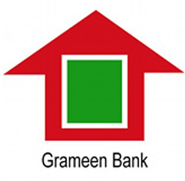The Grameen Bank microcredit model, conceived by Professor Yunus in 1974 in Bangladesh and now globally widespread, promotes both the economic development of a region and the development of human capital through a work method based on social bonds. This means organizing borrowers in small groups (5 people), as well as building a support network for small businesses.

The peculiar elements of the Grameen microcredit model are:
The entity in charge of spreading the microcredit mandates is Grameen Trust, a branch of the Grameen family that provides technical assistance and financial support to microfinance companies all over the world.


